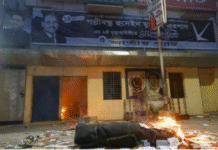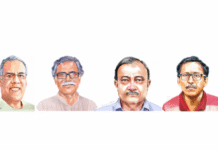Farah Kabir
Bangladesh’s grand economic ambitions are at odds with its current circumstances, but we shouldn’t have to prioritise one over the other
The year 2015 was of great significance in the history of development, as over 195 countries came together and agreed to work on a development pathway that was sustainable and “left no one behind.” This development framework included three major agreements: Sendai Framework for Disaster Risk Reduction (SFDRR), Sustainable Development Goals (SDGs), and the Paris Agreement on climate change.
SDGs are integrated and indivisible, global in nature, and universally applicable — taking into account different national realities, capacities, and levels of development by respecting national policies and priorities.
Bangladesh is a party to all these agreements, which have significant implications. It is therefore considered imperative for all development stake-holders to understand the inter-linkages of the agreements as well as their implications on future growth pathways in Bangladesh.
To understand the intricate connections between these agreements, it is important to understand the three areas SFDRR stands on for the substantial reduction of disaster risk and loss of life; and also on the economic, social, cultural, and environmental assets of individuals, businesses, communities, and countries.
SDGs aim to end poverty and hunger, improve the quality of life and nature, foster a just and inclusive society, and protect natural resources for the future.
The Paris Agreement, on the other hand, has been about reducing the emission of greenhouse gases and their associated impacts, adapting to changes in climate system, financing vulnerable/developing countries for their proper adaptation, and addressing loss and damage from climate change.
Bangladesh, one of the “next 11 countries,” aspires to transform itself into a middle-income nation by 2021 — the per capita income in Bangladesh has risen from $1,190 to $1,314, after all, placing it under the “lower middle-income country” status.
However, questions remain on how the growth pathway can be sustained in a way that addresses the current social disparities. It is worth remembering that Bangladesh is also one of the most “at risk” countries due to climate change.
As the UNEP Adaptation Gap Report 2014 suggested, the world is on its way to averaging a 3 degree Celcius increase in temperature, the average annual temperature of Bangladesh is expected to increase by 0.6C to 1.4C, meaning change in precipitation system, increased evapotranspiration — which means , in effect, agriculture will be under serious threat.
Due to the consequential increased frequency and intensity of natural disasters, there will be irreversible loss of life and damage to the eco-system.
Globally, it is being suggested that the SDGs will require about $3 trillion per year. From the perspective of Bangladesh, it’s very important to have a clear understanding the level of investment will be required for Bangladesh to implement SDGs in proper.
It has been estimated that the nation will require about $40bn until 2030 only for climate change adaptation alone (considering the 1.4C temperature increase). What will be the amount if temperature rises to 2C? What will be our strategy for mitigation? What are the potential alternatives?
Bangladesh has already proven its leadership and commitment in meeting MDGs and managing climate-induced disasters.
Inspired by global ambition and taking into account our national circumstances, we hope all stake-holders would contribute to this discussion and debate.
Source: Dhaka Tribune










